It is my understanding that there were teams building the models from helpers to apprentices to journeymen. I would love to read more if anyone has any sources about how these old masterpieces were done.Wow, they were very patient people.
Allan
 |
As a way to introduce our brass coins to the community, we will raffle off a free coin during the month of August. Follow link ABOVE for instructions for entering. |
 |
It is my understanding that there were teams building the models from helpers to apprentices to journeymen. I would love to read more if anyone has any sources about how these old masterpieces were done.Wow, they were very patient people.
there were no electric-operated tools, but they used mechanically (foot pedal) operated tools.I agree Mustafa, these are all great to have and I feel lucky to have them but none of them are essential. The photo below was built without any of the tools you mentioned as there was no electricity available at the time in England (1775)
Hallo Allan and sorry @HMSFly for this short off topic in your logIt is my understanding that there were teams building the models from helpers to apprentices to journeymen. I would love to read more if anyone has any sources about how these old masterpieces were done.
Allan
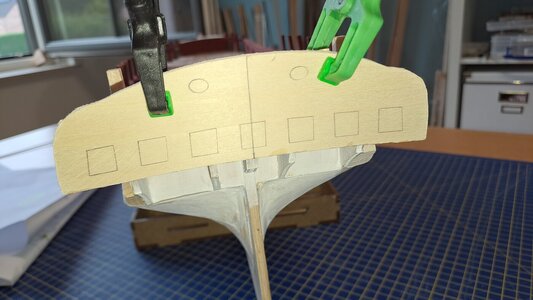
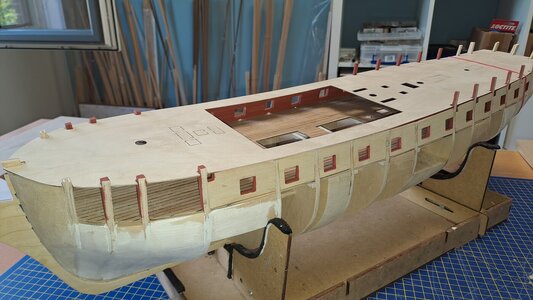
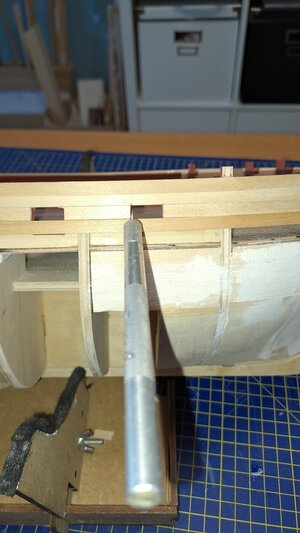
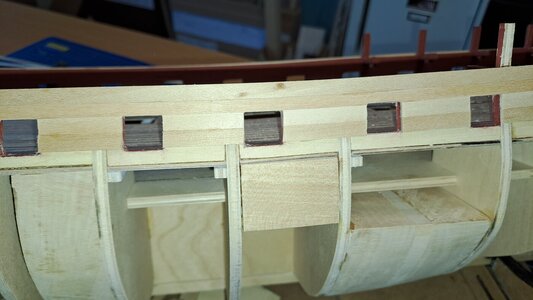
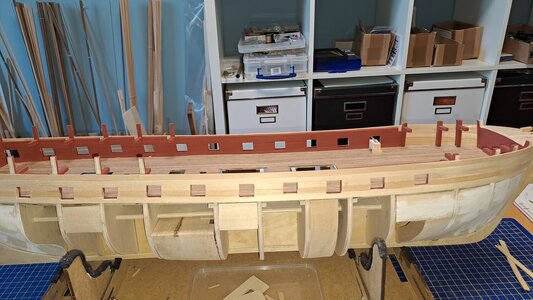

Very good planking work Marc.A good preparation is 50% of the job!
View attachment 464503
View attachment 464504
View attachment 464505
View attachment 464515
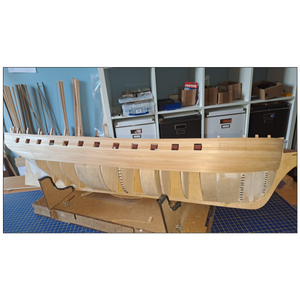
Dear Allan,Before going any further you may find it beneficial to mark out the width of each plank from the dead flat to the stem and to the sternpost. I sketched tick marks on a couple bulkheads in the pic below, in this case 12 strakes to show what I mean. If you have not already tried them tick strips work quickly and easily. Take a strip of scrap paper, and cut one for each bulkhead (or every other one) so it reaches the rabbet to the last plank already on the hull. Then, if there are twelve strakes to add for example, fold each tick strip it in half six times then mark the creases and then transfer the marks to the bulkheads. You can then taper the strakes of planking to the width at each point. If it is a tiny bit off on any given bulkhead it is not a problem as you can adjust on the next strake.
Allan
View attachment 464724
Hey,Very good planking work Marc.
Is this going to be double planked?
Are some of the planks butt jointed towards the stern. (Sorry I can see they are).
How do you make your bends and tapering?
Bravo
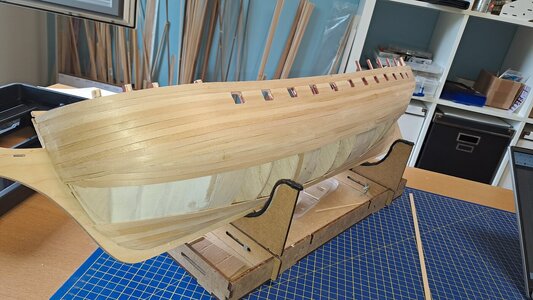
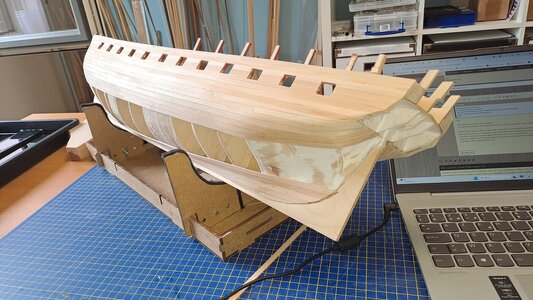
The HMS Fly got her coppering in 1778 according the information at Dry-docks - so not coppered when she was launched but already two years after - in this period a lot of ships were coppered during a re-fittingHey Allan,
I really don't know if HMS Fly had a copper bottom. I have seen that a sister ship, the HMS Pegasus, was fitted with a copper bottom (Amati construction kit, so I assume this is historically correct?). And there was not a long period between the construction of those 2.
The original plans still exists in the Royal Museums Greenwich.... but I never found this part.
Marc
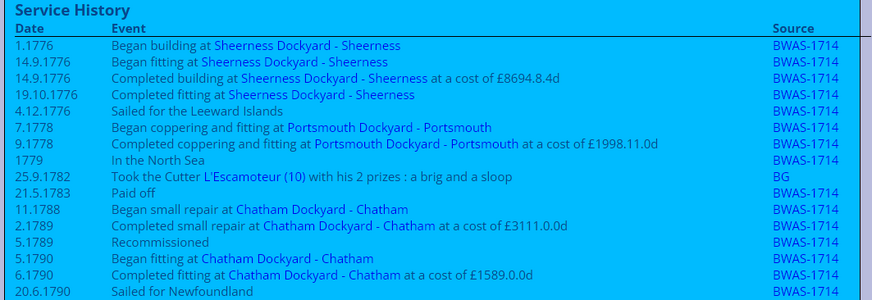
Perfect! I learned something (again)...Hi Marc,
The information Uwe gives is great. In general copper plating was tried and abandoned early in the 18th century, but then tried again in the late 1770s. Regarding
Pegasus (14) 1776 it probably did not have it when launched and as it sunk 10 months after being launched probably never did. I do not think it is a good idea to trust what any kit proposes without confirming by doing further research first, just as Uwe has done for Fly.
Allan
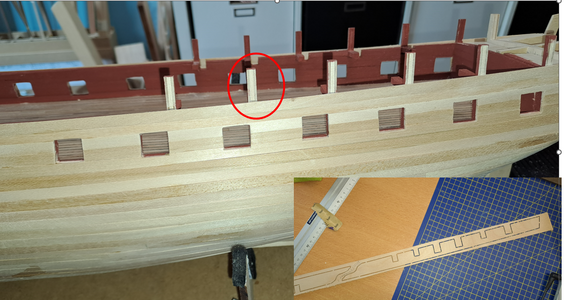
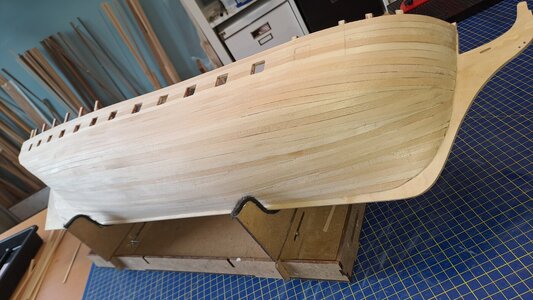
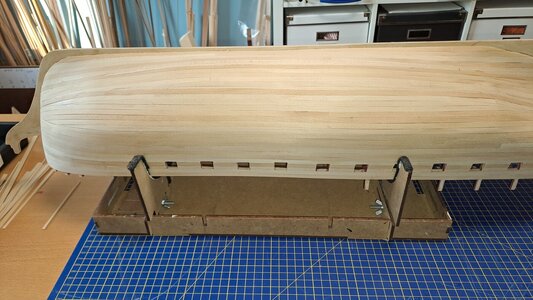
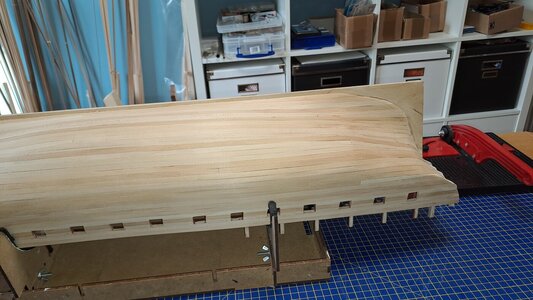
This makes no sense to me eitherBut the Bulkheads that stick out have to be sawed off after the "Quarter deck bulkwarks" have been glued to these Bulkheads?????
Hi MarcAnd now the finishing touch: sanding and again sanding....Actually, it doesn't have to be that precise. After all, a second planking is provided with 1x 4 mm Walnutt strips... And then a third layer of copper plates..... A lot off layers....
But, I was very lucky:
I almost started the 1st planking of the top part of the Bulkheads... But the Bulkheads that stick out have to be sawed off after the "Quarter deck bulkwarks" have been glued to these Bulkheads?????
I'll have to take a closer look at that..... First glue and then saw off... and the Maindeck has cutouts to accommodate the Bulkheads????
Question: How would you solve this issue?
Marc
View attachment 465492
View attachment 465486
View attachment 465487
View attachment 465488
